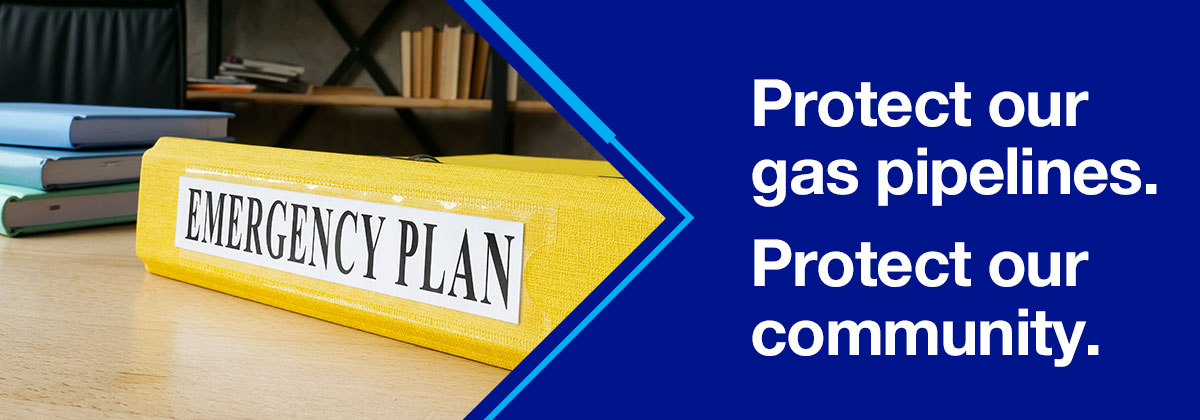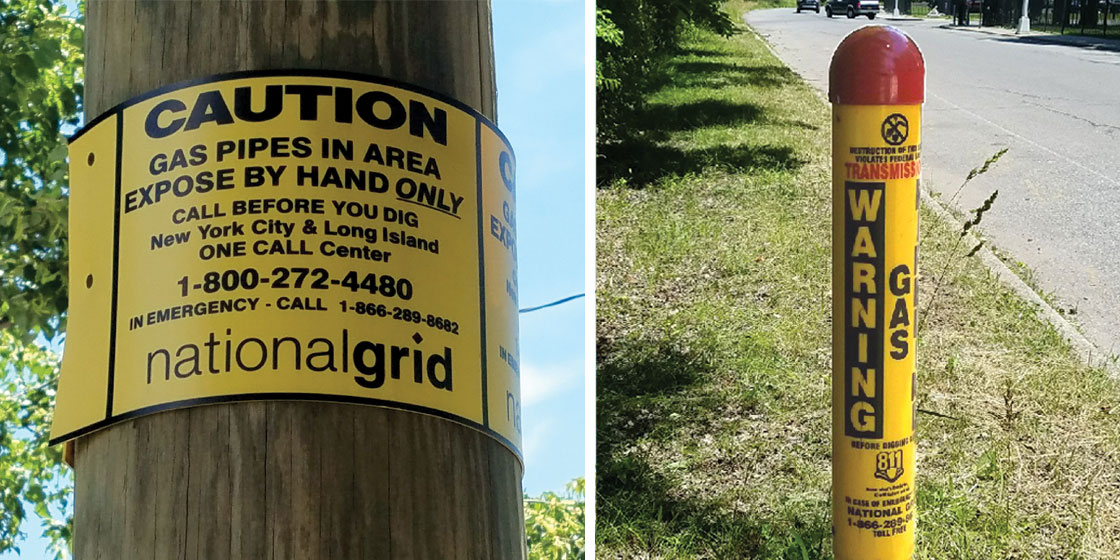 |
Important information:
School safety and emergency preparedness |
| Dear Superintendent, Principal, Custodial Personnel or Building/Grounds Supervisor, please share this pipeline safety information with your staff, facilities managers and contractors. |
|
 |
| Make natural gas leak recognition and response part
of your school’s emergency response plan. |
|
| Ensure that you and your staff know how to identify a gas leak and what to do in response. Review your school emergency response and evacuation plans, and be sure they include the following procedures for recognizing and responding to a natural gas leak. |
| Recognizing a gas leak |
| Be alert for any of the following: |
| • |
A distinctive sulfur-like odor |
|
| |
Important: Don’t rely on your sense of smell alone; the odor may fade or the gas may not be odorized. |
| • |
A hissing, roaring or whistling sound from the ground or gas equipment |
|
| • |
Dirt blowing into the air from a hole in the ground |
|
| • |
Continuous bubbling in water |
|
|
|
|
|
| Responding to a gas leak |
| If you suspect a gas leak: |
| |
1. |
 |
DO NOT use matches, lighters, radios or anything electrical – even a phone. |
|
| |
2. |
 |
Take your suspicion seriously. |
|
| |
3. |
 |
Evacuate everyone immediately. |
|
| |
4. |
 |
Gather outdoors at a safe location (far from the possible leak and upwind). |
|
| |
5. |
 |
Call 911 and National Grid at the emergency number in your area listed below. |
|
| |
6. |
 |
Keep everyone far from the leak until emergency response personnel inform you that the premises are safe. |
|
|
|
|
|
|
 |
| |
| Learn the location of natural gas pipelines in your area. |
| High-visibility markers with National Grid’s 24-hour emergency phone number indicate the general location of our high-pressure natural gas pipelines. |
 |
| These markers are meant only
as a general guide and warning and do not mark a pipeline’s precise location or depth. You
can also locate pipelines in your area by visiting the National Pipeline Mapping System
website. |
 |
| |
| Help protect natural gas pipelines. |
| The greatest risk to gas pipelines is accidental damage from digging activities. Even the slightest damage could lead to a catastrophic fire or explosion. Review these pipeline damage prevention guidelines: |
| • |
Call 811 before you dig. This free service will arrange for marking of buried natural gas pipelines in your dig area. |
 |
| |
| ⚬ |
Massachusetts: Call at least 72 hours before digging (excluding weekends and legal holidays). |
| ⚬ |
New York: Call at least two full working days before digging (excluding the date of your call, weekends and legal holidays). |
|
|
| Always contact your state 811 center before digging and for the most current requirements. |
 |
|
|
|
| • |
Respect the marks and dig with care.
|
| |
| 1. |
 |
Leave gas pipeline markers in place until digging is completed. |
|
| |
| |
 |
Note: Buried gas pipelines will be identified with yellow flags, stakes or paint marks. |
|
| |
| 2. |
 |
Use only hand tools within the “tolerance zone.” This zone spans the width of a marked utility line plus a specified tolerance distance from each indicated outside edge: |
|
| |
| |
 |
⚬ |
Massachusetts: 18 inches |
|
| |
| |
 |
⚬ |
New York: 24 inches |
|
| |
| 3. |
 |
Report any pipeline contact immediately to National Grid at the natural gas emergency phone number listed below. |
| |
 |
Important: If gas is leaking, you must also call 911. |
|
|
|
|
 |
| |
| National Grid’s underground pipelines deliver natural gas efficiently and reliably to schools, homes and businesses across New York and Massachusetts. To ensure the safe operation of these pipelines, we: |
| • |
Monitor our gas operations around the clock |
|
| • |
Inspect pipelines regularly for leaks, defects and corrosion |
|
| • |
Educate the public about safe digging practices |
|
| • |
Conduct training and periodic drills with emergency responders to prevent and
prepare for natural gas emergencies |
|
|
|